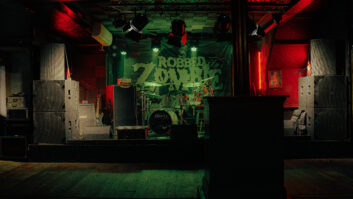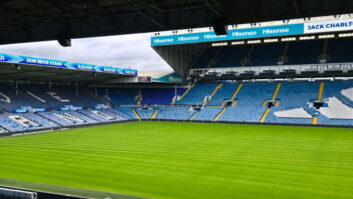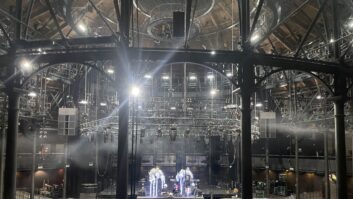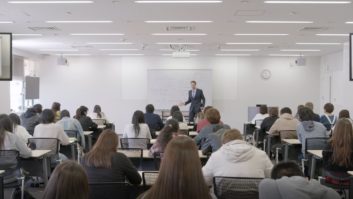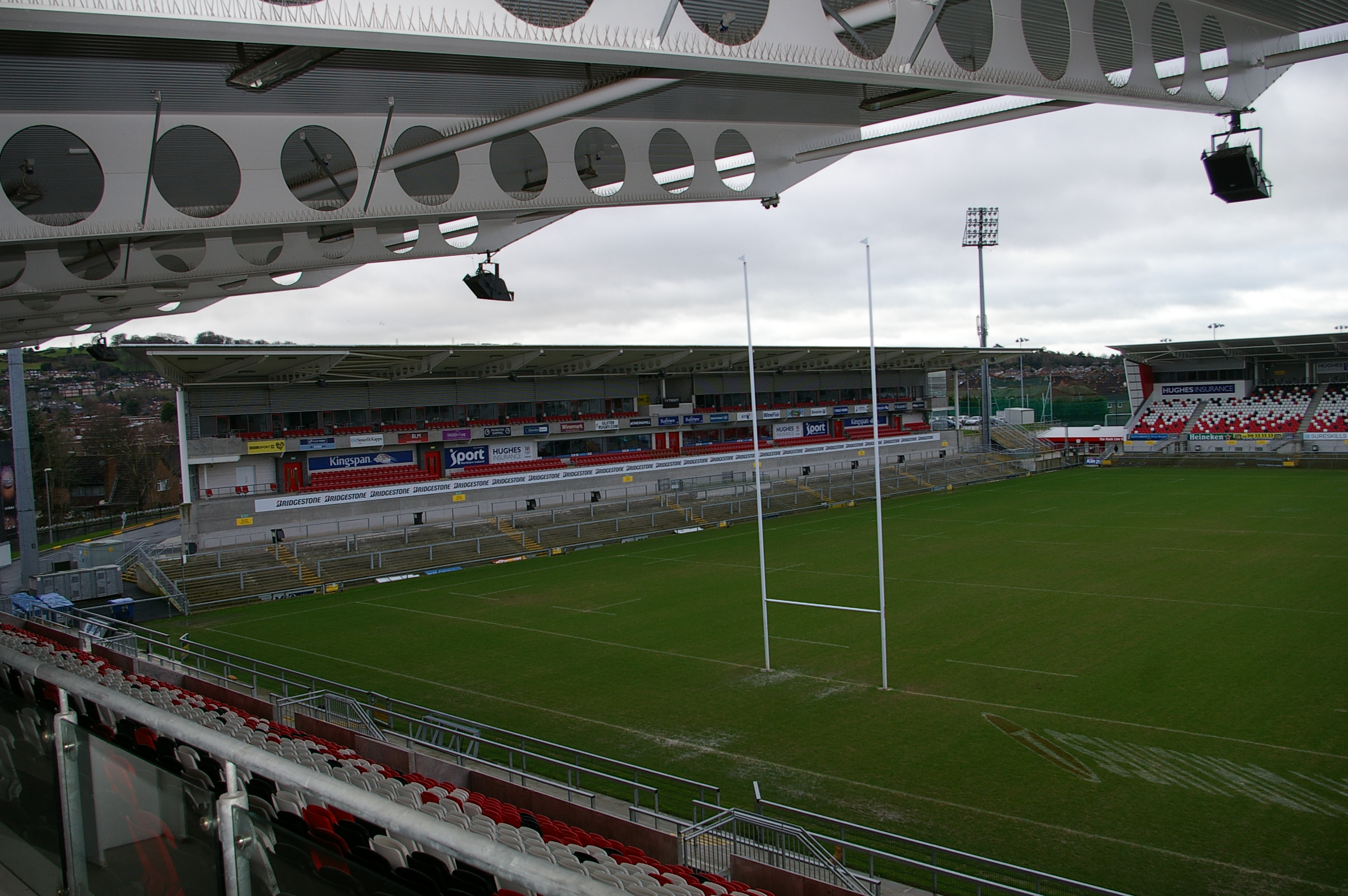
Promotion to a higher league is the kind of news that every club wishes to hear, regardless of their chosen sport. But such progress isn’t without its challenges in terms of ensuring that home venues’ PA-VA systems are fit for purpose, writes David Davies.
Promotion to a higher league is the sort of occurrence that tends to prompt the mass uncorking of champagne or – to paraphrase the late sports presenter Sam Leitch’s legendary comment about Raith Rovers – “dancing in the streets” of the relevant town or city. For the fans it can be a long sought-after reward for years of battle-weary support; for the club owners it can open the doors to lucrative new sponsorship opportunities that swell the coffers and make it possible to expand their brand not just locally, but nationally and even internationally.
But such progress is also not without its challenges. The possible influx of substantial numbers of new fans has obvious implications for the capacity and usage of home grounds, while the possible sale of new or additional broadcast rights means that the stadium or arena must look the part too. For some clubs, this can even result in the move to a brand new facility. Meanwhile, a number of federations or leagues have specific expectations of the technical specification and general layout of a club’s home venue.
PA-VA capability is inevitably one significant area of focus when a club does move on up, so Installation decided to speak to a number of leading vendors in this space to find out more about the type of issues that tend to occur – as well as the most common pathways to ensuring that a venue remains fit for purpose.
Regulatory requirements
While individual clubs and federations may have their own stipulations, there is universal need for compliance with the mandatory fire detection and alarm systems standard EN54, which has been the subject of extensive coverage in Installation and requires no further elaboration here.
However, in many countries there are several other notable documents containing codes of practice or guidance that will inevitably be referred to by technical managers and planning staff. In Britain these include BS7827, which is a code of practice for the design, specification, maintenance and operation of emergency sound systems at sports venues. Devised in part as a response to the Hillsborough disaster of 1989, the document covers stadiums, arenas, racecourses, swimming pools and other sports venues. The subject of a further revision in 2011, the guide is also applicable to shopping malls, conference centres and other large public facilities.
Also of relevance to the UK market is the Guide to Safety at Sports Grounds (often referred to as the ‘Green Guide’). Although it has no statutory force, a number of its recommendations are required by law via their inclusion in safety certificates included in the Safety of Sports Ground Act or the Fire Safety and Safety of Places of Sport Act. Now in its fifth edition, the Guide provides detailed advice to ground management and technical specialists such as architects, engineers and relevant authorities to help them assess how many spectators can be safely accommodated within a venue.
Antonio Ferrari, market manager audio contractor and director of the engineering support group at RCF, confirms that “refurbishing and updating a system means complying with new regulations for voice alarm systems – for instance moving from the old EN60849 to the current EN54 that requires certified devices and installation following European or national standards.”
“The general underlying factor [informing PA-VA deployment] is for the safety reasons in the ground, per the Green Guide and BS7827-2011,” says Nick Baldwin, sales and marketing director at voice alarm and evacuation systems manufacturer Baldwin Boxall. “It is true that the better a club is doing and the more money it has will influence the spend and the standard of the system.”
Expanded facilities
Indeed, promotion to a higher league is almost bound to inspire “the management and the owners to improve the visitor experience. This is done by more integration [by] means of pre-, mid- and after-game entertainment. Sponsors will be more interested in participating [as a result],” says Marc Kocks, business development manager install market at amplifier manufacturer Powersoft.
In terms of the PA, upgrades or complete system replacements are likely to be geared towards increasing power output and clarity to accommodate increased visitor numbers – and to better relay messages from advertisers and sponsors. The need to deliver a broader range of content to be shown around the match – including player interviewers, highlights from previous events and other related material – is another probable driver of change.
“A good-sounding PA with great musical performance sets the atmosphere: where there is performance, there is money to upgrade the venue and it will attract more people,” says Albert van der Hout, who is sales manager at voice evacuation systems specialist 4EVAC.
“Systems have to respect higher demands in terms of SPL,” says Ferrari, “because more people implies more noise; that in turn brings the need for a more powerful system to [obtain] a correct signal-to-noise ratio. Other demands are an extended frequency response and high intelligibility that most of the time means re-studying the complete system from scratch.”
Kocks also emphasises the increased output requirements as well as the entertainment angle. “System upgrades are mostly inspired by the demand for high power and full bandwidth content for entertainment purposes and to enhance the visitor experience,” he says. “In the case that the owners are extending the capacity of the venue, the system also has to be optimised for emergency paging applications.”
Additional stands are likely to mean “longer reverberation, implying the use of line array systems instead of point sources. The presence of a large crowd creates more noise – therefore more efficient and powerful speakers will be used,” says Ferrari, who highlights the availability of a wide range of RCF solutions suitable for installation in sports venues.
In terms of upgrades in existing venues, it can be the case that the present supporting structure, “for example, hanging points, weights, cabling layout, architectural and certification constraints, do not [enable the straightforward relocation] of the existing speakers and adding new ones. In these cases the sponsorship facility plays a key role in the decision-making process and in the choice of the sound systems’ performance, especially those with an entertainment purpose,” adds Ferrari.
www.4evac.com
www.baldwinboxall.co.uk
www.powersoft.com
www.rcf.it


